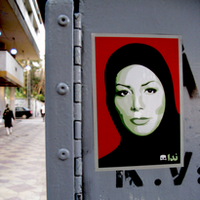On June 20, 2009, as she watched demonstrators at an Iranian reformist protest gather on Tehran's Kargar Avenue, Neda Agha-Soltan, 27, was suddenly shot in the chest and killed, ostensibly by a nearby Basij militiaman. Had this tragic incident taken place just a few years earlier, it might have been lost to history. As it happened, however, two separate amateur videos of Neda's shooting and subsequent death were quickly posted online, where they spread virally around the Internet.
If bearded ayatollahs were the iconic image of Iran's 1979 revolution, the tragic killing of this young Iranian woman has become the symbol of the 2009 post-election demonstrations. Her death instantly became a rallying cry against the violent government crackdown on protesters and reformists in Iran. It even spurred international efforts, including one called NedaNet, to help Iranians gain more unfiltered access to the Internet.
In the immediate aftermath of the Iranian election, Internet users around the world found themselves glued to their computers, transfixed by the slow but steady stream of information trickling out of Iran. Many Iranians inside Iran suddenly found themselves transformed into accidental citizen journalists, passing on information through Twitter, Facebook and other social networking Web sites.

